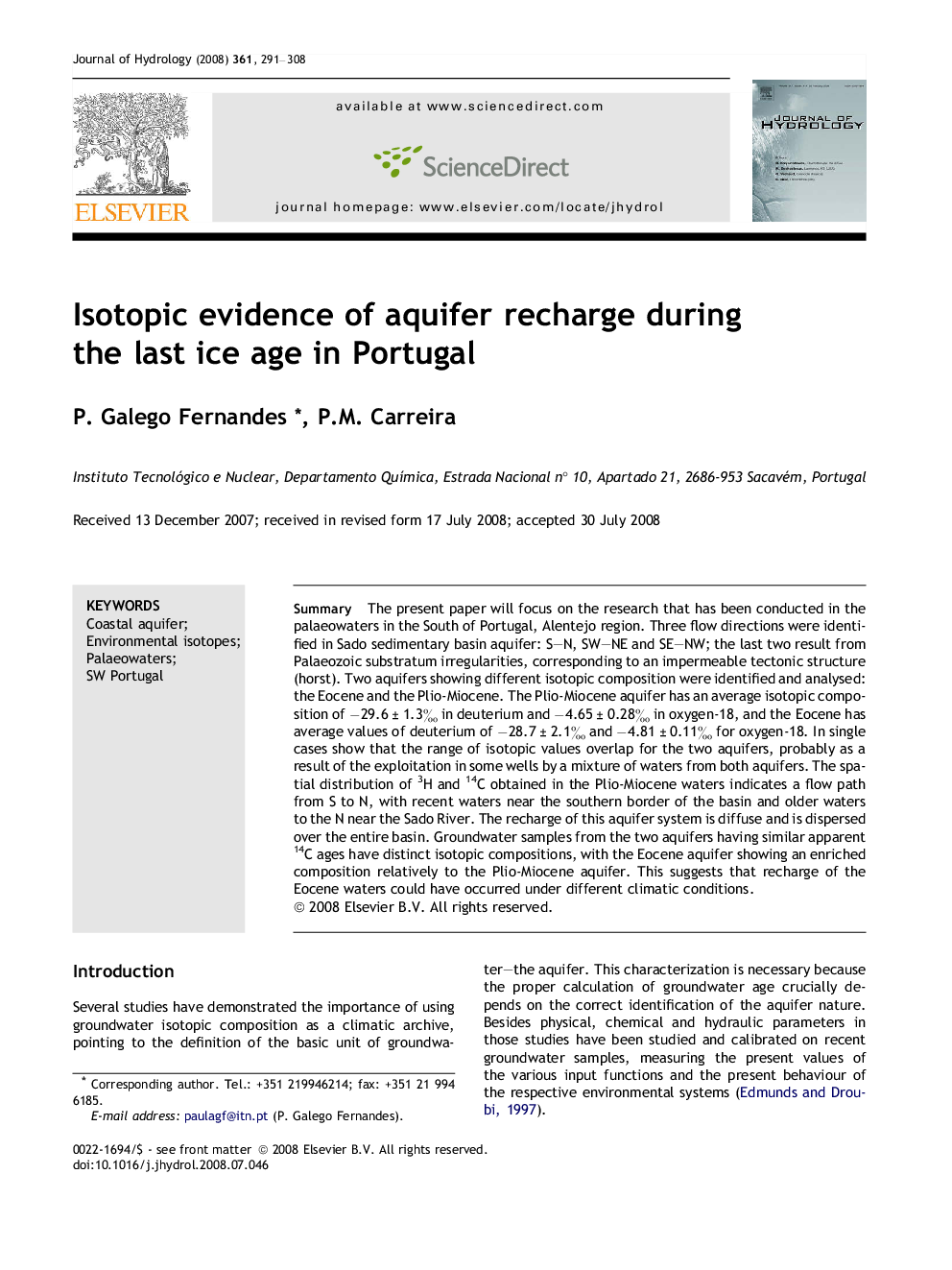| Article ID | Journal | Published Year | Pages | File Type |
|---|---|---|---|---|
| 4579187 | Journal of Hydrology | 2008 | 18 Pages |
Abstract
The present paper will focus on the research that has been conducted in the palaeowaters in the South of Portugal, Alentejo region. Three flow directions were identified in Sado sedimentary basin aquifer: S-N, SW-NE and SE-NW; the last two result from Palaeozoic substratum irregularities, corresponding to an impermeable tectonic structure (horst). Two aquifers showing different isotopic composition were identified and analysed: the Eocene and the Plio-Miocene. The Plio-Miocene aquifer has an average isotopic composition of â29.6 ± 1.3â° in deuterium and â4.65 ± 0.28â° in oxygen-18, and the Eocene has average values of deuterium of â28.7 ± 2.1â° and â4.81 ± 0.11â° for oxygen-18. In single cases show that the range of isotopic values overlap for the two aquifers, probably as a result of the exploitation in some wells by a mixture of waters from both aquifers. The spatial distribution of 3H and 14C obtained in the Plio-Miocene waters indicates a flow path from S to N, with recent waters near the southern border of the basin and older waters to the N near the Sado River. The recharge of this aquifer system is diffuse and is dispersed over the entire basin. Groundwater samples from the two aquifers having similar apparent 14C ages have distinct isotopic compositions, with the Eocene aquifer showing an enriched composition relatively to the Plio-Miocene aquifer. This suggests that recharge of the Eocene waters could have occurred under different climatic conditions.
Related Topics
Physical Sciences and Engineering
Earth and Planetary Sciences
Earth-Surface Processes
Authors
P. Galego Fernandes, P.M. Carreira,
